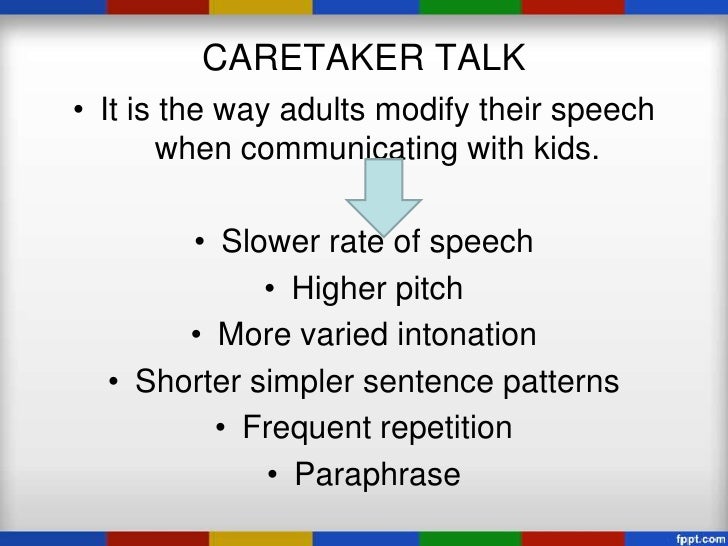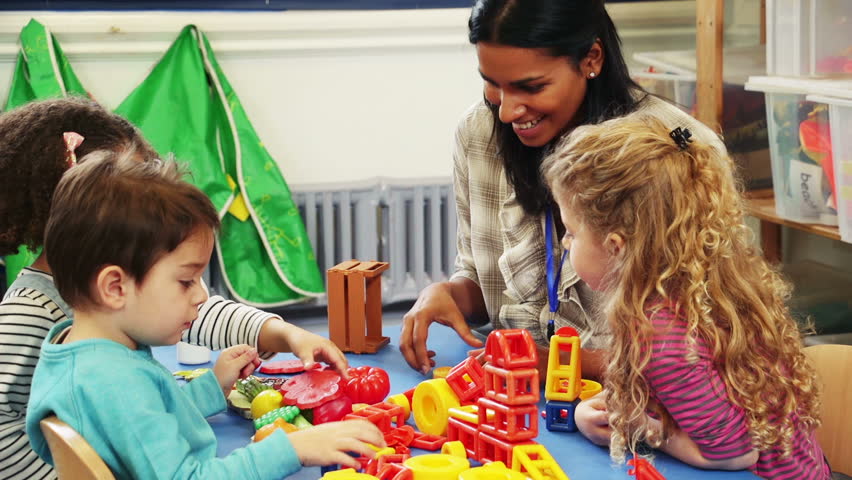Teaching young learners
How to teach young learners English or a second language is the first chapter of the book "English for Primary Teachers". With this book we have to prepare a presentation for our classmates in order to show them useful tips and advises to develop the different skills (speaking, listening, writing and reading) at Primary Education. In this first chapter we are going to see some useful instructions for us as future English Teachers.

>> How children learn a second language?
Knowing how children learn their first language can help us teach them a second language.
All children can speak at least one language when they come to school. We have to think about how they learn this first language. Think about babies and young children. Most mothers talk a lot to their children. Teachers should use the same process we use when we are learning our mother tongue for teaching a second language (talk to our children in English, even if they don´t understand everything, developing listening and speaking first)
>> Caretaker talk
What´s the caretaker talk exactly? It´s the way that adults modify the language in order to talk to their children to make the language or the communication easier for them. Teachers in school can do the same with their learners.

)

>> How children learn a second language?
Knowing how children learn their first language can help us teach them a second language.
All children can speak at least one language when they come to school. We have to think about how they learn this first language. Think about babies and young children. Most mothers talk a lot to their children. Teachers should use the same process we use when we are learning our mother tongue for teaching a second language (talk to our children in English, even if they don´t understand everything, developing listening and speaking first)
>> Caretaker talk
What´s the caretaker talk exactly? It´s the way that adults modify the language in order to talk to their children to make the language or the communication easier for them. Teachers in school can do the same with their learners.

>> Teaching tips
- We should do with our students enjoyable activities for introducing English
- Use English in class all the time or most of the time.
- Use gestures. If they don´t understand what are you saying if you are doing gestures at the same time they are going to associate the moves with the words you are saying and the are ging to guess thr meaning.
- Use pictures, photos to support the explanation.
- Use a puppet if you are at the first or second course of Primary Education.
- Tell students about your own personal experiences
- Encourage students by responding them positively. Help them to feel secure when they fail.
>> How to start the course?
To help your children acquire English, speak English from the beginning
of each English lesson. You can discuss with them in which way you want to be called: "teacher", "Elena", "teacher Elena" or "Miss López" for example. Another tip for you to start the course is to prepare a presentation about yourself and show it to your children. You can talk about your family, your hobbies, your pets in order to make your students get familiar with the new English teacher from the beginning. Then students can do a presentation too about themselves telling all the class how is his or her life, his or her family etc.
of each English lesson. You can discuss with them in which way you want to be called: "teacher", "Elena", "teacher Elena" or "Miss López" for example. Another tip for you to start the course is to prepare a presentation about yourself and show it to your children. You can talk about your family, your hobbies, your pets in order to make your students get familiar with the new English teacher from the beginning. Then students can do a presentation too about themselves telling all the class how is his or her life, his or her family etc.
>> How to start an English lesson?
- Using check attendance: "Is everybody here?, Is anyone missing? No?, ok so let´s start."
- Rearrange the classroom: "We need some more space for today´s lesson- you there- can you help me move some tables back?"
- Sing a song
- Say a rhyme
- Do question routines: days of the week, the weather, birthdays
- Play a game
)
>> How to finish an English lesson?
What do your children normally do after your English lesson? Do they?
- stay in the same room?
- go to another lesson in a different room?
- have a break?
- go home?
- stay in the same room?
- go to another lesson in a different room?
- have a break?
- go home?
Here we have some examples of phrases for ending our lessons:
- OK, that's all for now.
- Right. We've no time for anything else - don't do any more - we don't
have any more time today.
have any more time today.
- OK, pick up all your things- and put the books in the cupboard.
- That's all for today. On Monday, there'll be more.
- OK, children, make a line to say good-bye-following the leader. Bye bye.
- OK, it's break-time. So you can go out to play. But first-line up quietly by
the door.
the door.


Comentarios
Publicar un comentario